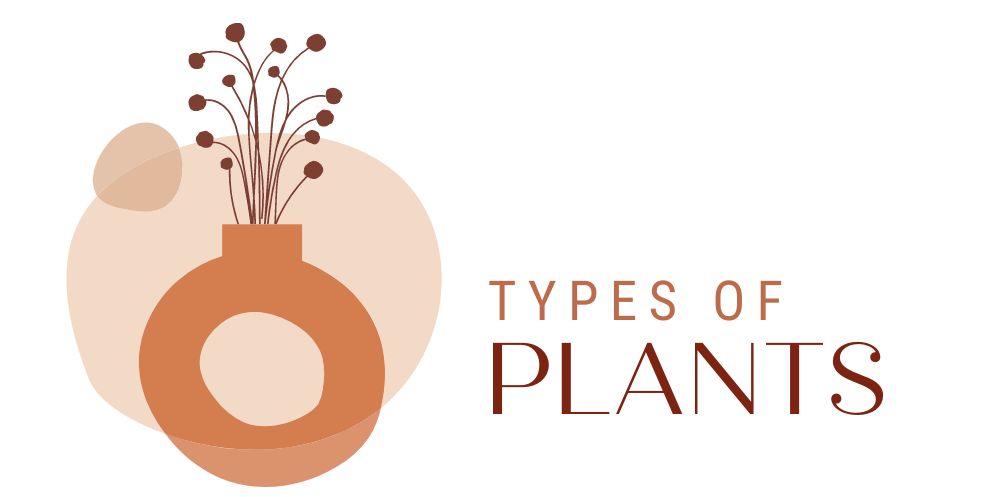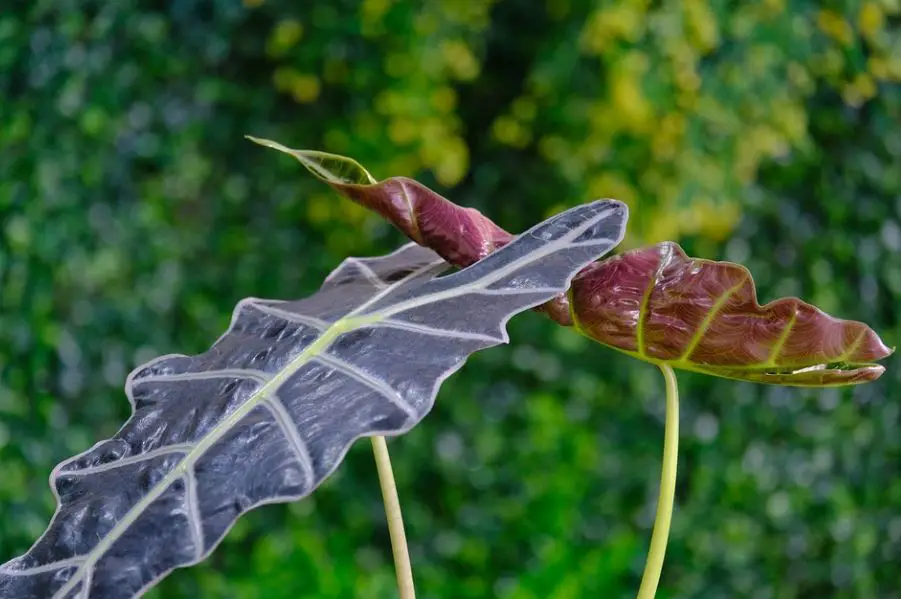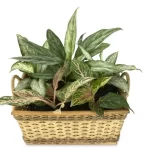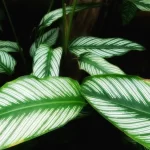Are you looking for Alocasia Varieties to decorate your home? Look no further and opt for Alocasia varieties. This pretty plant not only offers excellent visuals to any home, but it is also pretty versatile; interested? Continue reading and learn more about alocasia varieties including, how to grow them and more.
If you are determined to get a houseplant, you can’t go wrong with the alocasia varieties. This group of plants is one of the most frequently seen in homes and offices all over the globe. And there’s good reason; a live Alocasia plant is a low maintenance houseplant and is a natural air purifier. Plus, Alocasia varieties boast stunning foliage in terms of texture, shape, size, and color.
With that said, no matter how easy it is to care for a plant when you’re a first-timer, little research is always a good idea. And though it may seem a little intimidating, especially if you are new to growing your plants, you have nothing to worry about. With this guide, you’ll find out everything you need to know about Alocasia varieties.
Alocasia Varieties
Alocasia’ Black Velvet’
Alocasia reginula, or Black Velvet Alocasia, is an exotic plant from the tropics. It has large leaves that are such a dark shade of green; they are almost black.
The foliage has a velvety feel, making it even more desirable.
Best when planted in a well-draining potting mix containing perlite.
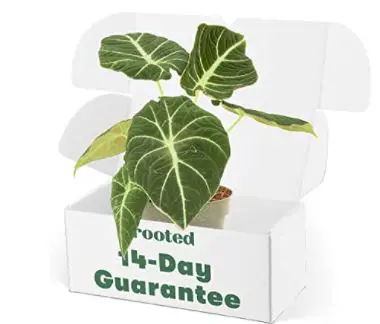
Features:
- Regular Watering
- Bright indirect light
- Not pet-friendly
Plants & Blooms Alocasia
This houseplant has beautiful variegated leaves in shades of green with a light outline on the leaf edges and looks excellent as plant décor in any space.
Live plants are a long-lasting gift that can start a lifelong hobby.
Water once a week to keep the soil moist. Bright, indirect sunlight near a window is ideal. Avoid drafts; keep plant between 65 and 85 degrees F.
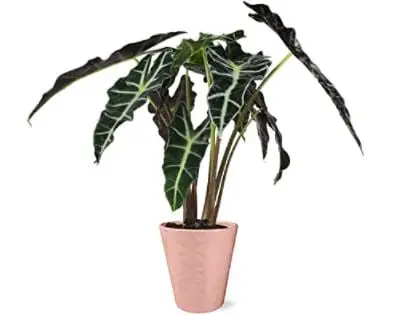
Features:
- Keep in bright, indirect light
- Keep at average room temperature
Alocasia Cuprea
Cuprea requires high humidity, indirect sunlight. If you cannot provide humidity, try a humidifier in the room with Cuprea or Place a pot on a rock bed with a bit of water. Keep Cuprea in a small pot.
Water, when soil is moist, requires high humidity. Only feed alocasia cuprea during the growing season, do not feed this plant during winter months.
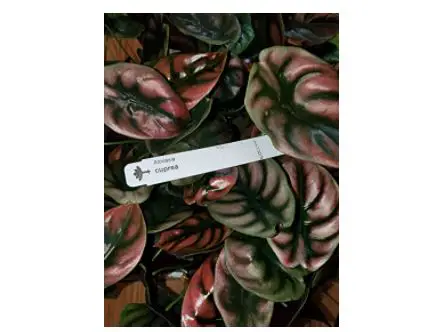
Features:
- Jewel Alocasia
- Bright, indirect sunlight
Alocasia Polly African Mask
Alocasia Polly’s impressive and stunning leaves are arrowhead or shield-shaped with large protruding white veins running through them, which contrasts strongly with the rest of the dark green leaf.
Along with its “Polly” nickname, the plant is commonly called Polly African mask, shield, elephant’s ear, or taro.
Your Alocasia Polly indoor planting should be well lit with bright but filtered light. Direct sunlight will burn the leaves.
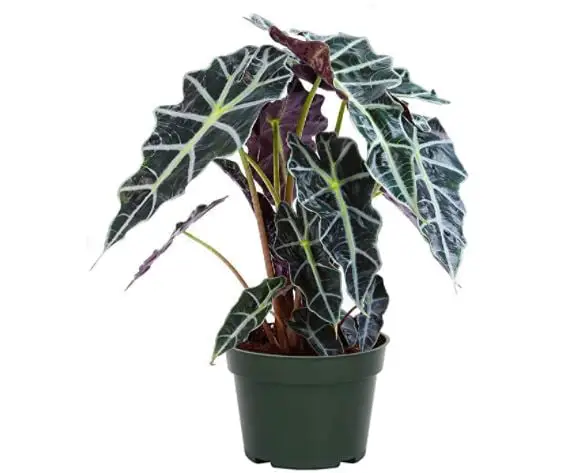
Features:
- Indoor Air Purifier
- Water-loving plant
- Eye Catching
Alocasia Macrorrhiza Taro Seeds
How to plant:
- Fill seeds in warm water for 24 hours.
- Fill bases in cold water for 72 hours.
- Put seeds in wet soil for 1.5cm cover with plastic
- Water every day, the seeds will sprout in 15-20 days. Feel free to enjoy our flowers.
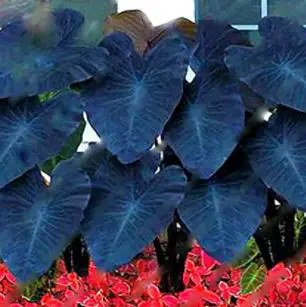
Features:
- Partial Sun
- Decorative
- Taro seeds
How many types of Alocasia are there?
There are 97 different types of recognized Alocasia plants. While these species are native to Asia and Eastern Australia, many new types of Alocasia hybrids have been created worldwide and kept as decorative houseplants.
What is the rarest Alocasia?
Alocasia Azlanii, or Red Mambo, is the rarest and most beautiful of the Jewel Alocasias. The Red Mambo is prized for its leaves, which appear almost dark purple with red/pinkish veins.
Common Questions About Alocasia Varieties
How do you identify Alocasia?
The large leaves of colocasia tend to point downward, while alocasia growth is more erect, giving rise to one of the plant’s nicknames, upright elephant ear. Alocasia leaves are very shiny or waxy in appearance, with prominent veins that give a ribbed effect.
What is the difference between Colocasia and Alocasia?
Alocasia leaves are very glossy or waxy in appearance with prominent veins. They are more arrow-shaped or heart-shaped, while Colocasia has flat green leaves and the leaves are more or less round. Alocasia leaves are sometimes but not always smaller than Colocasia leaves.
What are common Alocasia varieties?
Alocasia Amazonica ‘Polly’
The most popular Alocasias, the Polly, is a compact hybrid known for its large, dark-green leaves shaped like an arrow or a shield.
These narrow leaves have wavy, undulating edges and are adorned with thick white veins running throughout the leaves.
Alocasia micholitziana’ Frydek.’
Commonly called the Green Velvet Alocasia resembles Alocasia Polly in size and leaf shape/color, but it is a little different and much harder to find for purchase. Frydek plants have velvety (instead of glossy), deep-green leaves with bright white, prominent veins on the foliage.
Alocasia zebrina
Leaves on the Zebrina are thinner than most Alocasia varieties, but they still display the bold, noticeable veins, just without the bright white markings. Alocasia zebrina grows to about 3-feet tall and spans a similar width.
Alocasia reginula ‘Black Velvet’
Thick, heart-shaped leaves grow to the size of saucers and develop a deep black color and almost velvety texture accented with prominent silvery-white veins.
Alocasia ‘Dragon Scale’
This variety of Alocasia has light green or silvery-green foliage with dark green primary and secondary veins resembling large scales. The underside of the leaves is light green with reddish-brown veins.
Alocasia macrorrhiza ‘Stingray’
Alocasia Stingray is unique in that it displays the yellow and green zebra-esque markings of the Zebrina with a completely different leaf shape. The leaves look like a stingray with fish-like wings and tails.
Alocasia baginda ‘Silver Dragon’
Alocasia Silver Dragon is one of the more compact Alocasia varieties. Mature plants rarely even reach 3-feet in height and width. Fully grown leaves stay small too, growing to about 6-inches in length or about the size of your hand.
Alocasia macrorrhizos ‘Giant Taro’
One of the largest Alocasia varieties, the Alocasia macrorrhiza, is the Giant Taro or Upright Elephant Ear because of its large stature and gigantic leaves. With lime green, glossy arrow-shaped leaves, plants grow up to 5-feet tall and typically span a width of 3 to 5-feet.
Alocasia cuprea ‘Red Secret’
Red Secret Alocasia sets itself apart from the other varieties with its signature red/pink tones found on the foliage. Mature plants will grow to about 3-feet in height and span a similar width to create an eye-catching plant.
Alocasia cucullate Hooded Dwarf.”
Also known as Buddha’s Hand, the Hooded Dwarf Alocasia is thought to bring good fortune and is found in Buddhist temples. Smaller than some other Alocasia varieties, Hooded Dwarf only grows to about 3-feet tall and 3-feet wide.
Alocasia longiloba
It is known for its large, slender, arrow-shaped leaves. The top of the leaves is a striking bluish green; blade margins, the midrib, and primary veins stand out in a lighter silvery-grey.
But what sets this variety apart is the undersides of the foliage in their deep eggplant purple hue.
Alocasia wentii
Alocasia wentii are a little more extensive than some other Alocasia varieties, growing to about 3 to 4 feet tall and a similar width. The vast, blistered leaves can reach up to 3 feet long to create a beautiful canopy and a striking houseplant specimen.
Alocasia lauterbachiana’ Purple Sword.’
Long narrow, shiny green leaves have a sword-like appearance and are accented on their underside by coppery hue with tones of purple. The leaves on this Alocasia are much longer and narrower than other Alocasia varieties.
Is Alocasia plant toxic?
Leaves and stems contain oxalic acid, a compound that is toxic to pets and children. Keep your plants out of reach to avoid ingestion of plant parts and detrimental effects.
Tips for Caring for your Alocasia Plant
- Place your plant in a location where it can receive bright, indirect light throughout the day. The foliage will burn or scorch if put indirect light.
- Don’t let air temperatures drop below 60℉ and keep plants away from cold drafts coming in through leaky windows or out of air conditioning vents.
- Keep soil moist but not soggy; allow the top 1-2″ of the potting soil to dry out before watering thoroughly. During the more relaxed, winter months scale back watering when plants are dormant to prevent root rot.
- Maintain high humidity levels by grouping your plants, using a pebble tray, or trying one of these methods to increase humidity.
- Check plants frequently for insect pests, especially spider mites, as they like the large leaves on Alocasia plants.
- Feed your Alocasia with a suitable fertilizer.
- Repot your Alocasia every couple of years, moving it to a slightly larger pot.
Read: Hellebore Varieties
